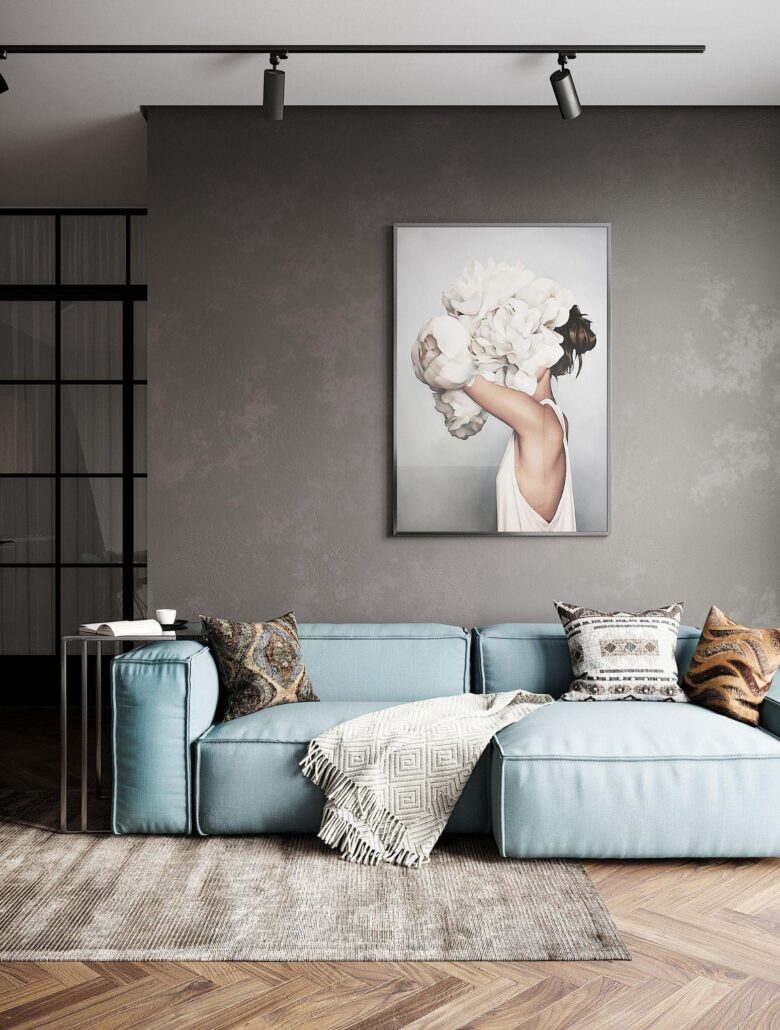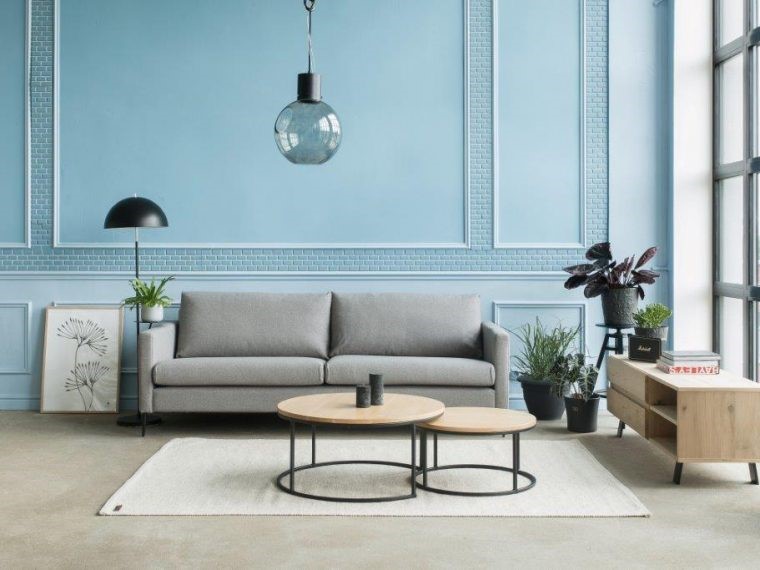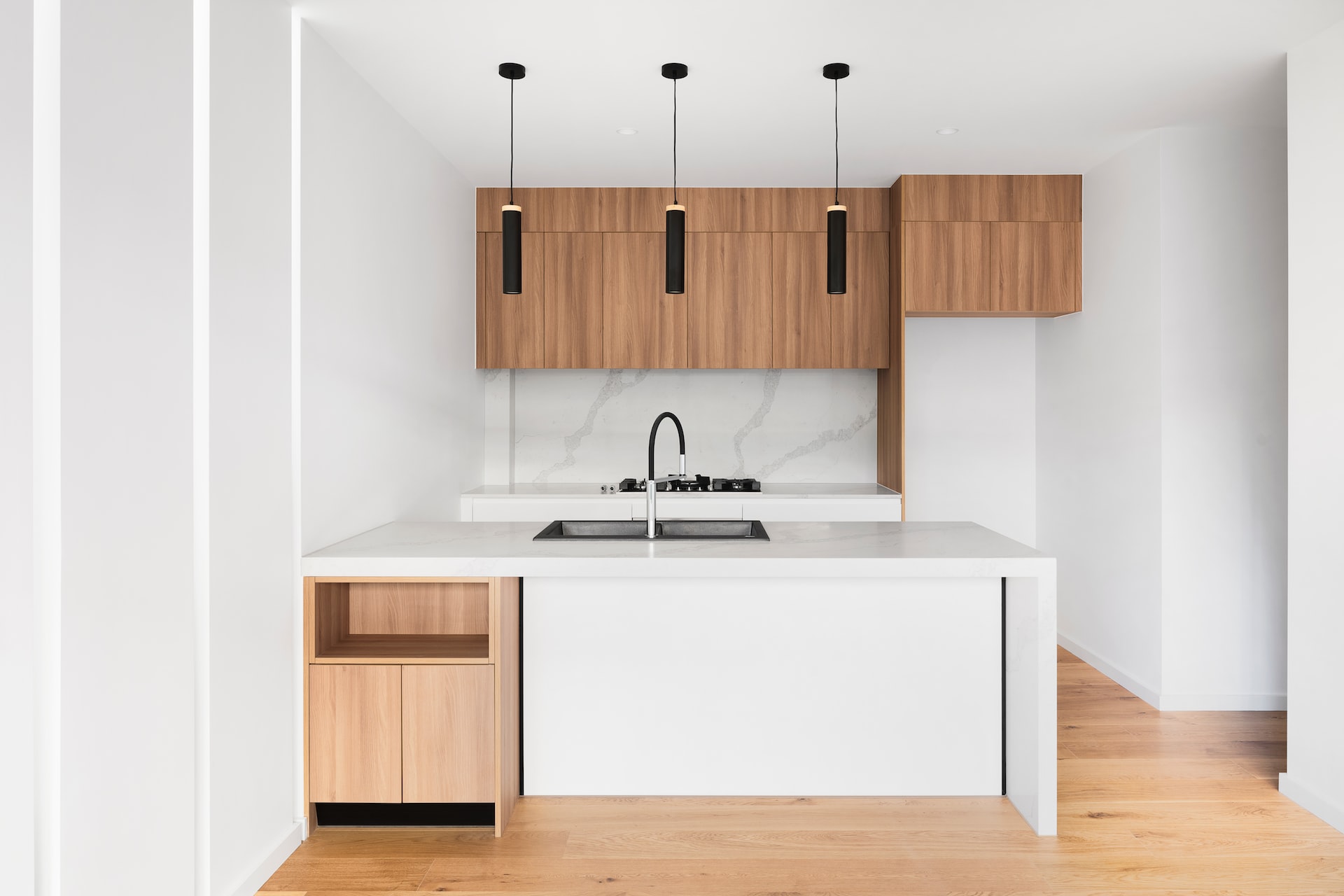It is possible that in the near future the economic situation will not change and many of us will continue to work remotely. Spending so much time at home is torture for many people. To make life easier, many people are thinking about renovating their interiors. Popular styles of yesteryear – cold scandi and austere minimalism – are beautiful in the picture, but difficult in everyday life. Soft minimalism combines their advantages and compensates for their shortcomings: it creates a feeling of warmth and coziness and helps to maintain order, but without fanaticism.
Self-isolation makes us re-evaluate simple things: fabrics pleasant to the touch, colors that do not tire, but also do not cause boredom, smooth lines and lack of sharp angles, decorative objects, associated with pleasant memories.
When life in the world has stopped, a flexible and plastic interior design helps to get out of the swamp of self-isolation. Soft minimalism is a lot of air, space and light. It is compact, modular furniture that is easy to move around, changing the zoning in the house and turning the sitting area into a sports area. It fits the modern style and rhythm of life.
At the same time, it is easy to work with, versatile, neutral and suitable for both small apartments and large houses. Its task is simple – to create comfort and make life easier. Great attention should be paid to all elements of the decor, including doors, doors are a major part of the interior and that they always work properly, you can contact a reputable door repair company Top Door Repair https://topdoors.ca/.

The Formula of Soft Minimalism
“Soft” is “soft.” This style is about comfort, about the desire to escape from the rigid rhythm of the city and the uncertainty of the world. At the same time, soft minimalism “frees” the head from unnecessary things. In this environment, you concentrate better on what you are doing: whether it is recreation or remote work.
Soft minimalism is a design with a simple formula: Japanese philosophy of beauty of imperfection and restraint + Scandinavian comfort of hygge + materials with expressive texture.
In such an interior you will feel comfortable and safe. And quarantine is the best time to update.
“Minimalism” is part of the global trend for an eco-friendly attitude to design. It includes both cluttering the dwelling and sensible consumption. Multicolored decor and unnecessary things are the information noise of the home space. Getting rid of it, you can find new strength and inspiration.
A lot of light, little furniture. Light and pastel colors, neutral color scheme. Soft lines, smooth shapes, semicircular arches, furniture without sharp angles, lamps with round shades. Materials with complex textures: wicker, velvet, ceramics.
- Soft minimalism is similar to Scandinavian style, but it has more color.
- Similar to Japanese interiors, but adapted to the Western lifestyle.
- Similar to minimalism, but with decor and textiles. Minimalist style photos are nice to look at, but it is not easy to live in such an interior. Soft minimalism softens the intransigence of asceticism and adds warmth to the space.
Elements of soft minimalism
- Color scheme.
Nude tones, light wood colors, pastel colors and colors with the word “dusty” in the name. - Furniture
Low, rounded, upholstered, compact. Tables with smoothed corners, a cupboard with an arched top. - Fixtures
Round overhead lights and lamps with lampshades made of natural materials. Lots of natural light. - Decor
Ceramics, arts and crafts. Wooden boards and bowls, wicker garlands. Anything related to personal memories and hobbies. And definitely live plants.

How to decorate an apartment in the style of soft minimalism?
Be guided by feeling and get rid of unnecessary things.
The work starts with the space. Light is an important condition, so get rid of heavy curtains, replacing them with a light cloth or blinds.
The best flooring is wooden. Another interesting, but difficult option in the home is cork. Carpets and rugs make the room cozier.
Walls – flat, with wallpaper for painting or plastered. Try warm shades of gray and beige or eggshell color. Pure white looks too cold in most interiors. A spectacular technique is to use several shades of the same color.
Decor and finish materials are natural, textured, and expressive. Combine wool with cotton, weave with velvet, brass with wood.
If working on your own with an established interior, the first step is to get rid of the excess. The main goal is to leave only those pieces of furniture that are a true joy and do not overpower. And pay special attention to details: beautiful cabinet handles, laconic compositions of books, candlesticks and vases on tables and nightstands.
Ground Rules:
- Clean lines. Trivia can be hidden in closed cabinets and storage systems, leaving only the bare minimum of decor in plain sight. And, of course, in order to maintain the effect, you will have to maintain order. Clean surfaces – clear thoughts. This is especially true in quarantine, while working at home.
- Connection to the world. Natural light, natural materials, living greenery.
- Soft colors. Choose shades of sand, complement with light wood. If you want saturated colors – your choice is terracotta, dusty pink or sage green. Spot bright accents are acceptable.
- Buy less. Pay attention to what you already have. Out of a dozen vases, keep one, but put it in a prominent place.
- Each piece is special. When there are few items, each one takes on meaning and fits into the routine. Let a favorite teacup, a cozy plaid, a home library be the object of decor.
Basic mistakes:
- Not considering the situation. Impeccable soft minimalism in an apartment with a small child is a dubious venture, if not a failure, then difficult.
- Strive for the picture from the cover. Take into account the desires and needs, fit what you already have instead of buying up a catalog of furniture from the first page to the last – this is contrary to the very spirit of soft minimalism.
- Acidic colors, screaming patterns are tiring, and the interior in the style of soft minimalism should be soothing.
Where to look for inspiration?
In fashion, architecture, design, and the websites of leading furniture and decor brands.
Pinterest. Be inspired not only by photos of interiors, but also by combinations of fabrics and colors in fashionable images on soft minimalism.
IKEA is an affordable source of edgy ideas. Consider, for example, this Vedbu armchair: rounded shapes, soft lines, and a cover of textured fabric in a dusty color. Perfect for soft minimalism.
Suitable ideas can be found on the websites of HM Home and ZARA Home.
Where to find furniture and decor?
Furniture and decorative items are in the range of many stores – the same Ikea or Zara Home. If you prefer a unique design – in the style of soft minimalism there are world-renowned designers.
MEMBERSHIP
| “Yes” in Software Minimalism | “No” in Software Minimalism |
| Ergonomic furniture design: modules and extra storage space | Bulky furniture with lush decorations. |
| Scandinavian style with a touch of oriental elegance: solid and elegant items, light wood, soft diffused light. | Pure Scandi style is too cold. Pure oriental – too many restrictions. Pure minimalism – too ascetic. |
| Layering in the interior, which is easy to create due to the skillful combination of textures and materials on a neutral color background. | Excessive decor, screaming prints, neon colors, monochrome, heavy dark curtains. |
| A style that doesn’t slow down the rhythm of life, but speeds it up. It’s easy to keep order, change decor, and, more globally, move, work at home, learn new things. | Once and for all fixed zones, functions, furniture and decor. |
| Purity. | Clutter. |
